A Guide to Different Types of Tooth Fillings
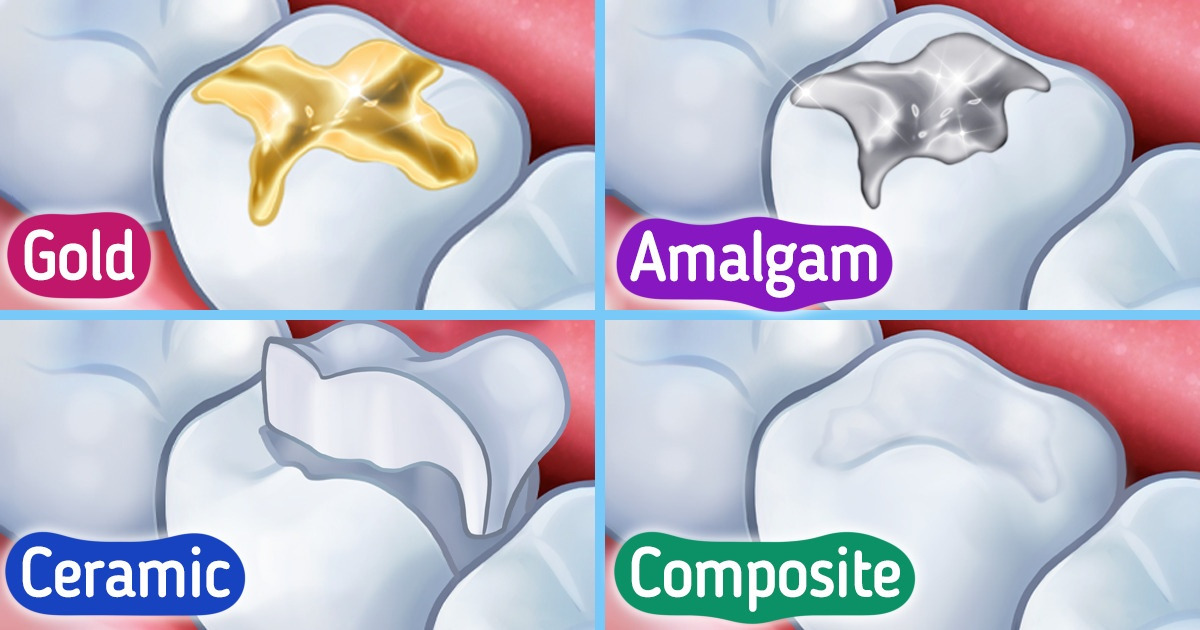
Dental fillings are the materials used to repair and restore teeth. Most of the time, the inside of the tooth is filled that was removed due to a cavity. Broken, cracked, and worn out teeth can also be filled (for example, due to bruxism).
5-Minute Crafts is going to tell you about all kinds of tooth fillings, how they are installed, and what the pros and cons are of each type of material.
❗This article is for informational purposes only. In order to diagnose cavities and choose the right kind of dental filling, see a dentist.
1. Gold fillings
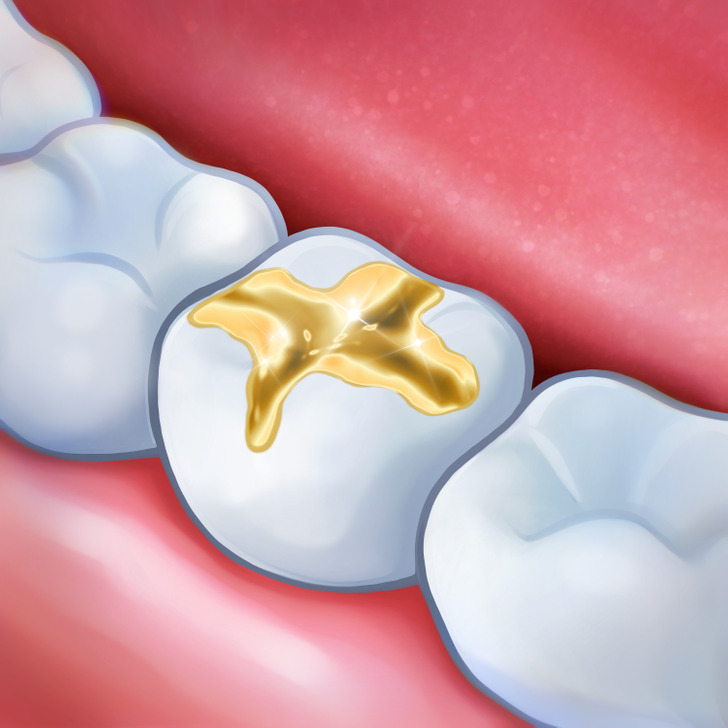
Gold has been used in dentistry for over 1,000 years. It’s used thanks to its durability. Modern gold fillings consist of an alloy of gold, copper, and other metals. They are less popular than other types of fillings now, so it might be hard to find a dentist that works with this material.
Pros:
➕ Longevity (last for 10-15 years and more).
➕ Durability (they can handle a load on the molars).
➕ No corrosion.
➕ Some patients like the look of gold fillings.
➖ Gold fillings are much more expensive than other types. They are 10 times more expensive than amalgam fillings.
➖ You need at least 2 dental visits to install a gold filling.
➖ Most patients don’t like the gold color. They prefer the materials as close to the natural tooth color as possible.
➖ In some cases, there’s a rare side effect — galvanic shock. It appears if you place a gold filling next to an amalgam filling. The effect between the metals and your saliva can produce electricity and lead to sharp pain.
2. Dental amalgam
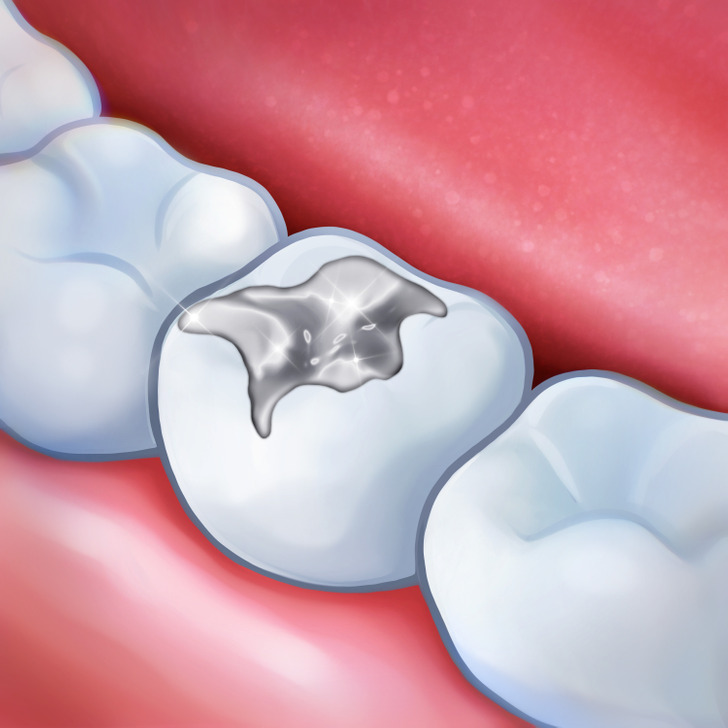
Silver amalgam is a mixture of mercury, silver, copper, and zinc. A filling that is made from this material has a silver color and a metallic sheen. Due to its durability and low cost, it’s been used in dentistry for several generations.
➕ Longevity (lasts for 10-15 years and more).
➕ Durability (it can handle a load on the molars).
➕ The cost is cheaper than popular composite fillings.
➕ The silver color looks more natural than gold.
➖ It may give a grayish sheen to the tooth tissue.
➖ To install the filling, you need more space. This is why you have to remove healthy tooth tissue.
➖ The filling material may expand and contract due to hot and cold liquids. This can lead to cracks and new cavities.
➖ “Silver” fillings are not the same color as teeth, so many patients don’t like the look.
➖ Around 1% of people are allergic to the mercury that is present in amalgam fillings.
➖ Amalgam fillings are not recommended for children under the age of 6, people with neurological problems and kidney issues, or for pregnant women and nursing mothers.
3. Ceramic fillings
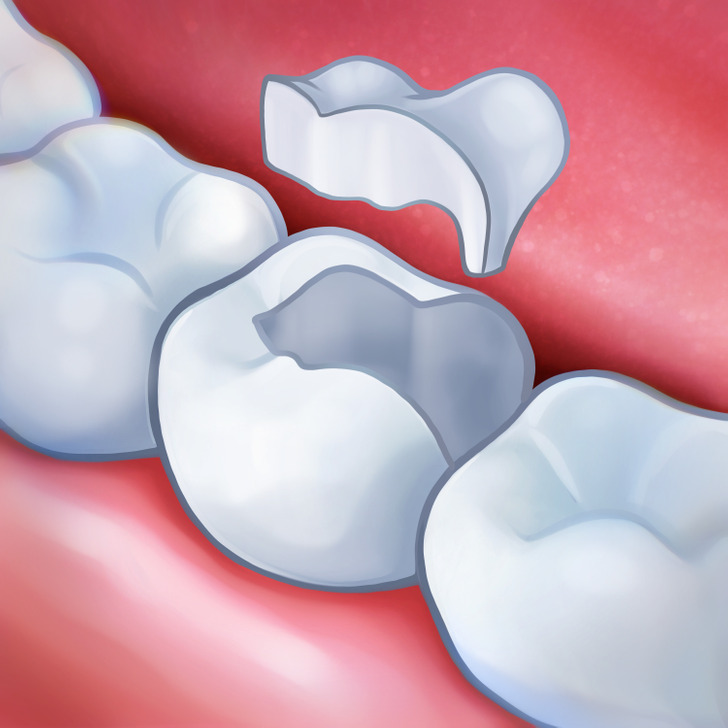
A ceramic filling is made from porcelain.
Pros:
➕ Longevity (lasts for 15 years or more).
➕ More resistant to staining than composite materials.
➕ Aesthetically attractive.
➕ Resistant to abrasion.
Cons:
➖ High price similar to gold fillings.
➖ Fragility. To improve the durability, they are made in big sizes, so more of the tooth needs to be removed.
4. Composite fillings
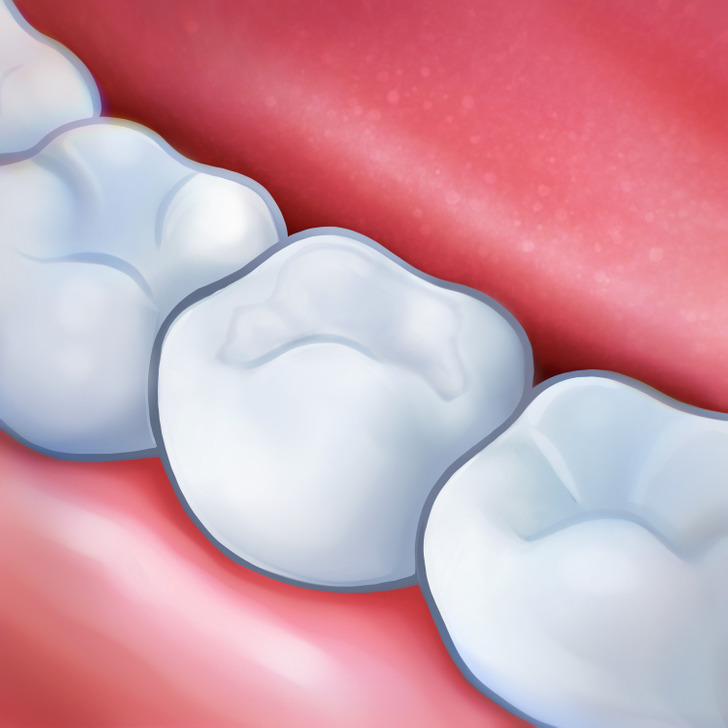
Composite fillings are the most popular because you can choose a color that is very close to looking natural. They are made from resin and polymer materials. The material is put into the tooth when it’s soft and then a light is placed on it with a blue lamp and the material becomes firm.
Pros:
➕ Aesthetically attractive. You can choose a shade that is very close to looking natural. This makes composite materials perfect for front teeth.
➕ Less tissue has to be removed compared to amalgam or ceramic fillings.
➕ Composite materials “cling on” the tooth surface and give it additional support.
➕ Good for repairing small chips.
Cons:
➖ Could be 2 times more expensive than amalgam fillings.
➖ They wear down faster than amalgam, gold, and ceramic fillings. They need to be replaced every 5-10 years.
➖ Composite fillings are installed in layers which takes more time than other types.
➖ Depending on the location, composite fillings may be the reason for chipped teeth.
5. Glass ionomer fillings
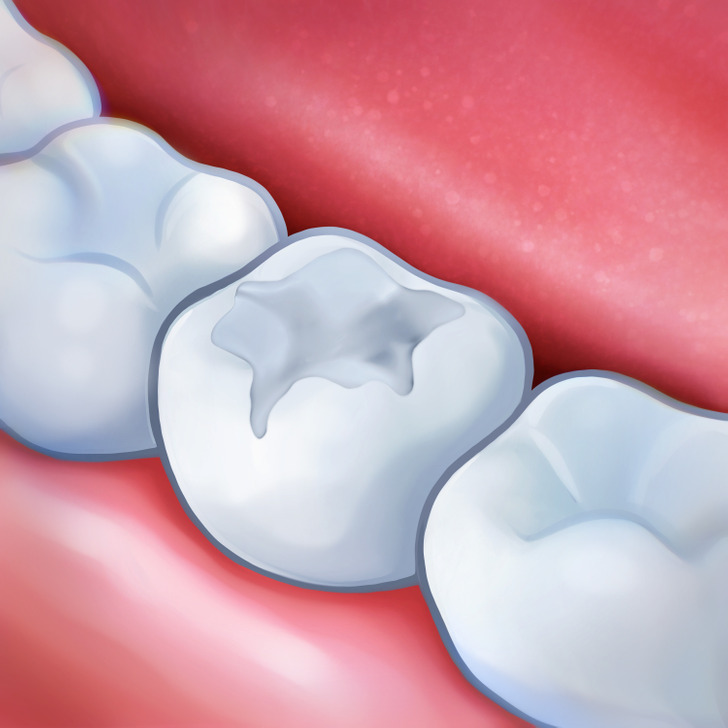
Glass ionomer fillings are made from acrylic and a specific type of glass material. They are often used to treat cavities in young children and for fillings below the gum line. Besides, these fillings are popular as temporary options. They are installed when a break is needed between different steps of root treatment.
Pros:
➕ They release fluoride, which can help protect the tooth from further decay.
➕ Good for children.
Cons:
➖ Less durable than composite fillings.
➖ Work less than 5 years and cost the same as composite materials.
➖ Don’t look like natural teeth.
6. Compomer fillings
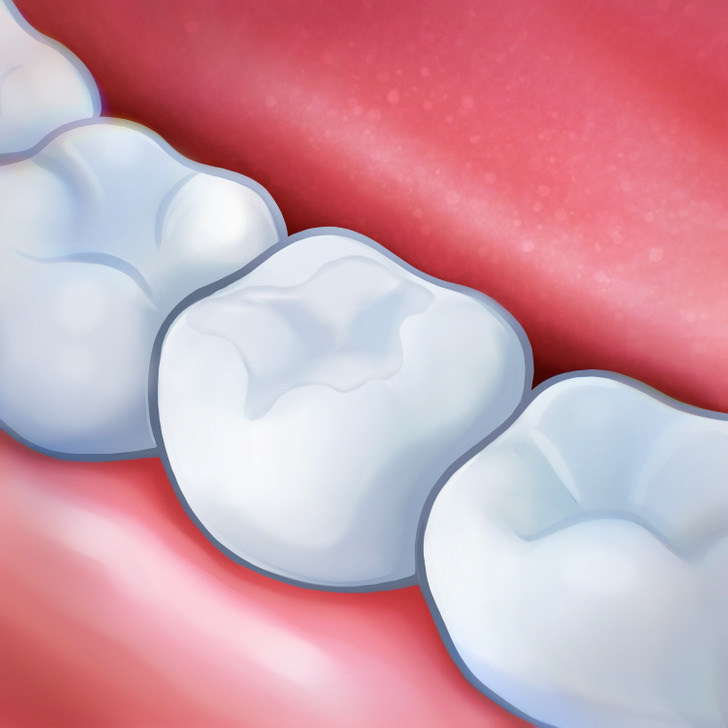
Compomer fillings are a hybrid of 2 materials: dental composites and glass ionomer cement. They were designed in an attempt to combine the advantages of 2 kinds of fillings: the aesthetics of composite materials and the ability to release fluoride.
Pros:
➕ Aesthetics. You can choose a shade close to the natural enamel color and use it on the front teeth.
➕ Release fluoride, which can help protect the tooth from further decay.
➕ More durable than glass ionomer fillings.
Cons:
➖ Less durable than composite fillings so they are not good for huge restorations.
➖ Work for 2-4 years and more.
Steps taken when filling a tooth
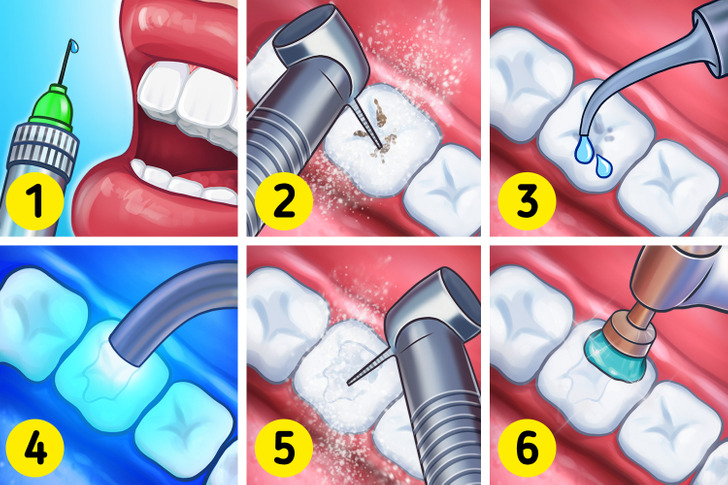
Usually, installing a filling includes these steps:
- Using an anesthetic to numb the area around the tooth.
- Removing the part of the tooth with the cavity.
- Disinfecting the tooth. If the cavities were next to the tooth root, the dentist might put in a liner made of glass ionomer to protect the nerve.
- Installing the filling. Composite materials are put in layers that become firm under blue light from a special lamp.
- Shaping the composite material.
- Polishing the filling.
Over time, the filling might have to be replaced. Usually, this happens due to normal wear and tear, when the constant pressure due to chewing and squeezing teeth leads to cracks and other damage on the filling. Besides, if there is some space between the filling and the enamel, pieces of food and bacteria can get under the filling and cause cavities. This situation requires treatment. Finally, new cavities may be too big and there may not be enough tissue from the tooth to support a new filling. In this case, your dentist will suggest a tooth crown.